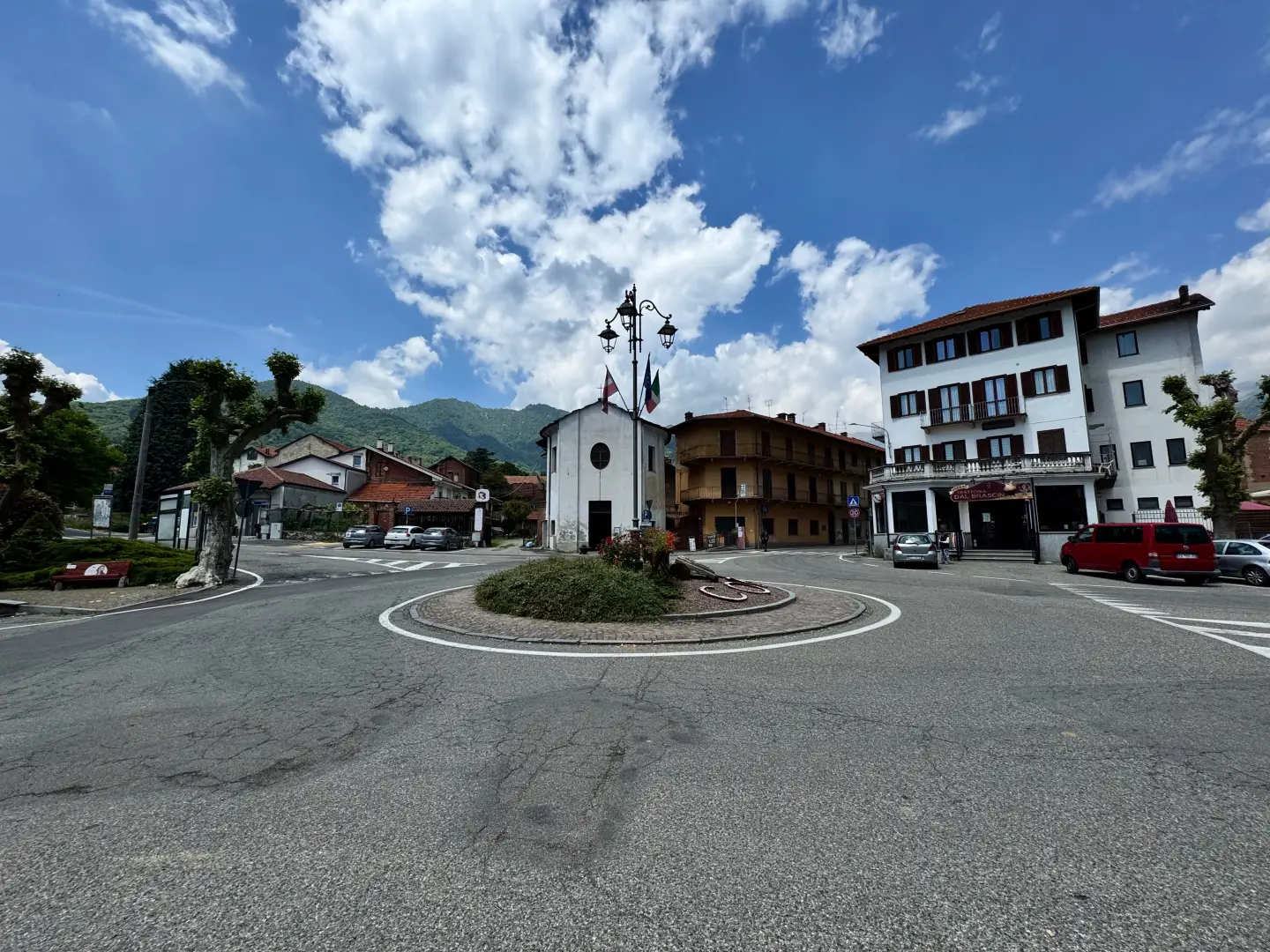Corio

Access
Corio can be reached by car from Turin in just over an hour, via the provincial road that passes through Mathi, Nole and Rocca Canavese. Although not directly served by railway lines, the town is connected to the regional transport system by extra-urban buses. The short distance from the capital and its proximity to the Lanzo valleys make it an accessible and interesting destination for day trips, short stays or holiday periods.
Introduction
Corio is a mountain municipality located in north-western Piedmont, in the province of Turin, about 32 kilometres from the provincial capital. It rises to an average altitude of 625 metres and extends like a natural amphitheatre in the valley of the Malone torrent, over a territory that stretches from the valley floor to the first Alpine peaks of the Canavese area. Its panoramic position, the wealth of historical villages, the lively popular traditions and the religious architectural heritage make Corio a place of particular cultural and tourist interest, frequented above all for summer holidays by people from Turin and nature and history enthusiasts. Its Celtic roots and subsequent medieval stratifications make it a place with an ancient history deeply rooted in the mountain identity of Piedmont.
Description
The territory of Corio is varied and articulated: to the south are gentler and flatter areas, such as the hamlet of Benne, while proceeding northwards the landscape becomes rougher, climbing up to the slopes of Monte Angiolino, which at 2,168 metres represents the highest elevation in the municipality. The entire district develops along the Malone valley, an ancient natural boundary in pre-Roman and medieval times, marking a predominantly wooded environment punctuated by clearings, stone hamlets, paths and watercourses. The views alternate wide vistas of the Turin plain with more intimate glimpses, typical of secondary Alpine valleys.
The history of Corio has its roots in Celtic times, before the Romanisation that occurred after the defeat of the Salassi. The toponym itself, first attested in 1019, seems to derive from 'Curia' or 'Curium', suggesting an administrative function of the village in late antiquity. In the Middle Ages, Corio became one of the territories disputed between great families: in 1164 Emperor Frederick Barbarossa gave it to the Marquises of Monferrato, who built the castle there. Shortly afterwards, in 1335, the Savoy dynasty took over. The 14th century was marked by the violent revolt of the Tuchini, a popular movement against feudal impositions, which Corio actively joined before the bloody repression. In the following centuries, the community was hard hit by the plague and French incursions, which also left traces in the local toponymy. The memory of the anti-Napoleonic rebellion of 1798 remains one of the most vivid identity traits of Coriese history.
Economic life has long revolved around subsistence agriculture, sheep farming and handicrafts. Today, the municipality sees a tourist presence concentrated in the summer months, with second homes, hotels and restaurants. Tourism is mostly family-oriented and linked to the tranquillity of the landscape, the possibility of excursions and the rediscovery of local traditions. Industry has a limited presence in the hamlet of Crotte, where a few metallurgical companies specialising in steel processing operate. Agriculture, mostly family-run, focuses on the cultivation of maize, vegetables and chestnuts, a typical resource of the hillside. The craft of woodworking is still active, although the historical weaving has disappeared.
Corio's cultural life is expressed through the numerous patronal festivals, the autumn Castagnata, local markets and a lively carnival with traditional masks such as the 'King', the 'Sapator' and the two 'Sindic' of Monte and Piano, symbolising the distinct souls of the town. The religious heritage is rich and well-preserved: the Parish Church of San Genesio and Sant'Anna, in Piedmontese Baroque style, contains frescoes and altarpieces of considerable value. The Oratory of Santa Croce, the Cappella dei Battuti with a fresco dating back to 1587, the Church of the Black Madonna and numerous other sacred buildings scattered throughout the hamlets make up an artistic and spiritual itinerary spread throughout the area.
The landscape invites exploration, with trails for hikers, cyclists and paragliders and climbers. The paths towards Monte Soglio and Case Borello offer scenic climbs of varying difficulty, and some routes reach remote places dotted with chapels, ancient fountains, chestnut woods and rural testimonies. The climbing wall and well-marked MTB trails complete the offer for those seeking outdoor activities. The green areas and heights of Corio are also frequented for the simple beauty of the landscape and for the silence that can still be found, far from the mass tourism routes.
Information
Area: 41.39 km²
Altitude: 625m
Maximum elevation: 2,168m - Cima dell'Angiolino
Number of inhabitants: 3,029 as of 31.12.24
Name in dialect: Còrie
Name in dialect: coriesi
Patron saint: Saint Anne, celebrated on 26 July and Saint Genesius, celebrated on 25 August
Bordering municipalities: Balangero, Coassolo Torinese, Forno Canavese, Grosso, Locana, Mathi, Nole, Rocca Canavese, Sparone
Website: www.comune.corio.to.it